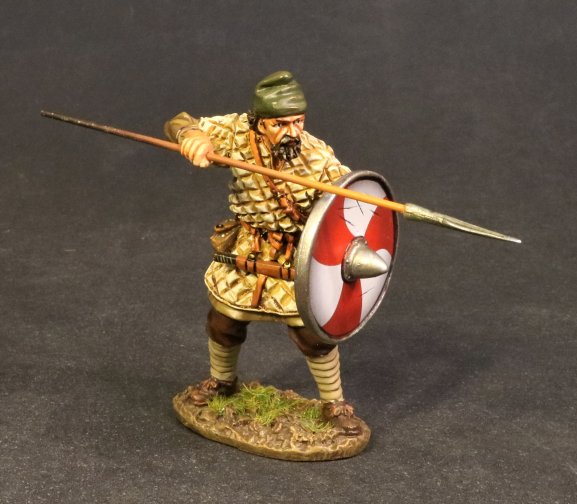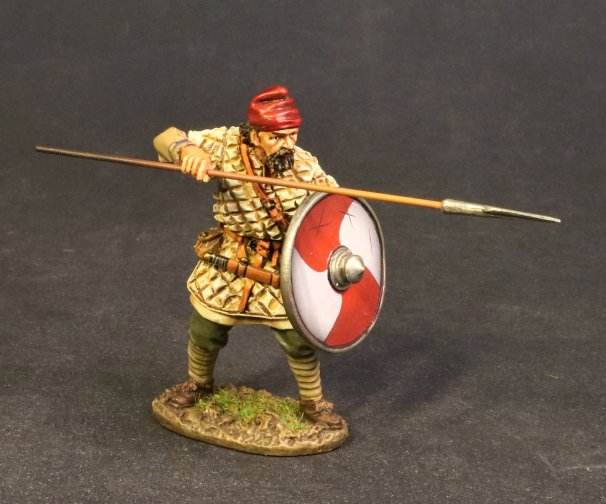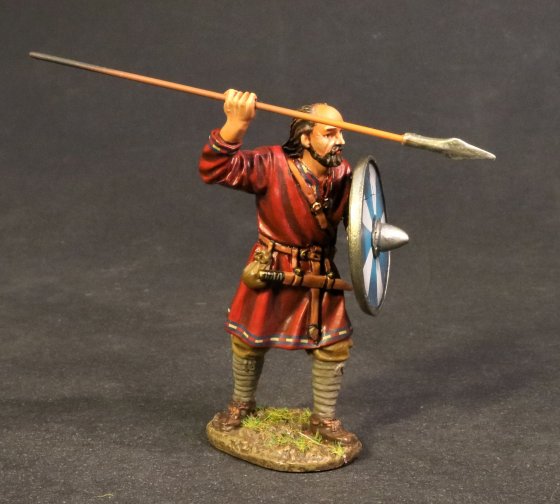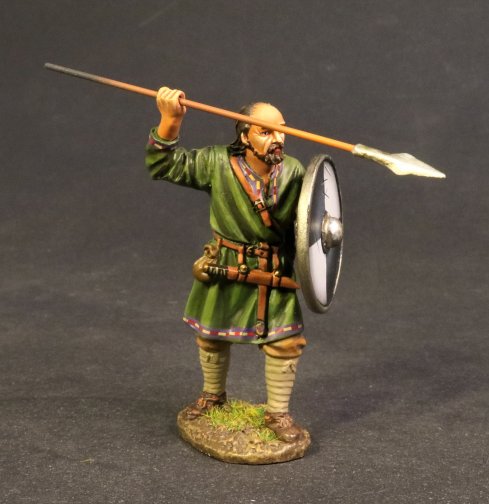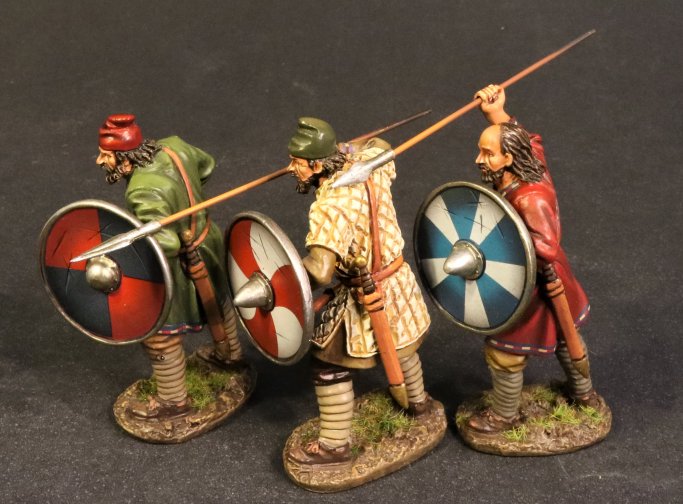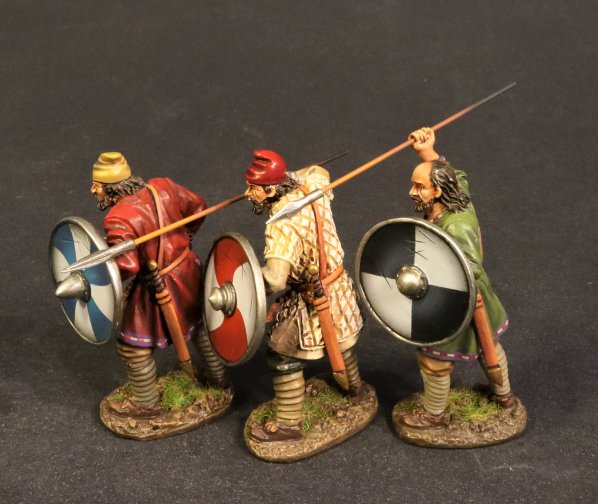NEW RELEASES FOR FEBRUARY 2020
THE AGE OF ARTHUR
ANGLO SAXON/DANISH SHIELDWALL
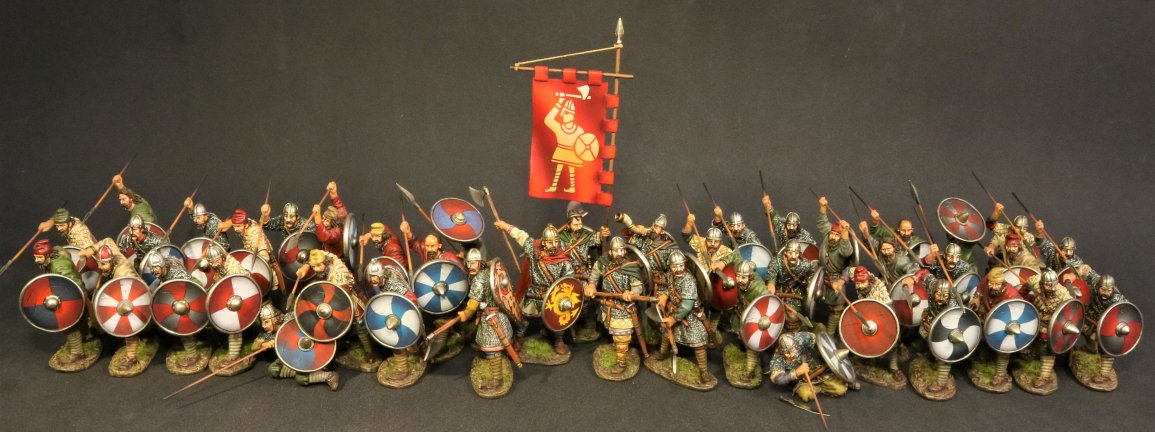
The death of King Edward the Confessor of England in January 1066 had triggered a succession struggle in which a variety of contenders from across north-western Europe fought for the English throne. These claimants included the King of Norway, Harald Hardrada.
The Battle of Stamford Bridge took place at the village of Stamford Bridge, East Riding of Yorkshire, in England on 25 September 1066, between an English army under King Harold Godwinson and an invading Norwegian force led by King Harald Hardrada and the English king's brother Tostig Godwinson. After a bloody battle, both Hardrada and Tostig along with most of the Norwegians were killed. The battle has traditionally been presented as symbolising the end of the Viking Age,
Harold's victory over the invading Viking army was short-lived. Three days after the battle at Stamford Bridge, on 28 September, a second invasion army led by William, Duke of Normandy, landed in Pevensey Bay, Sussex, on the south coast of England. Harold had to immediately turn his troops around and force-march them southwards to intercept the Norman army. Less than three weeks after Stamford Bridge, on 14 October 1066, the English army was decisively defeated and King Harold II fell in action at the Battle of Hastings, beginning the Norman conquest of England
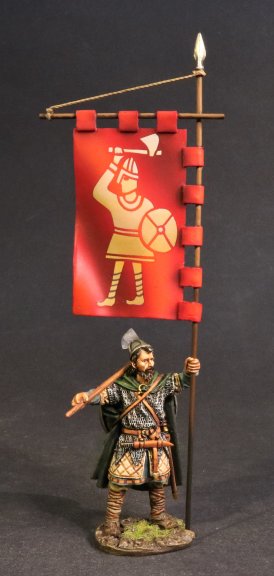
SX-04
THE AGE OF ARTHUR,
ANGLO SAXON/ DANES.
SAXON HOUSECARL WITH KING HAROLD’S BANNER.
(2 pcs)
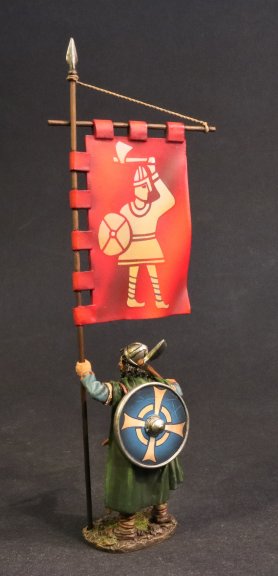
King Harold Godwinson’s personal standard remains a mystery. There is no actual evidence from the usually helpful Bayeux Tapestry, which shows the red dragon standard of the house of Wessex, but not “The Fighting man” banner around which Harold and his bodyguards made their last stand against the Normans.
It is said the banner was made by Harold’s mother, Gytha, and others that it was woven by Harold’s common law wife, Edith swan-neck.
It is believed that William the Conqueror sent it as a tribute to pope Alexander II, where it seems to have vanished.
This banner is based on the one designed for the 2010 re-enactment.
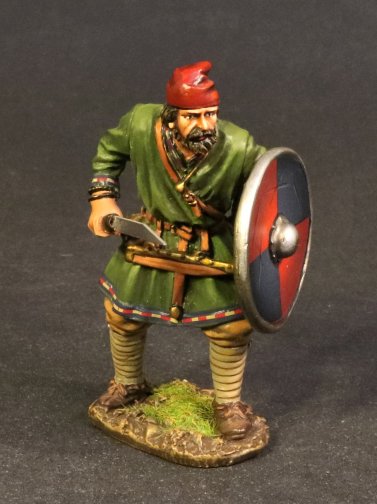
SX-29A
THE AGE OF ARTHUR,
ANGLO SAXON/ DANES.
SAXON FYRDMAN.
(1 pc)

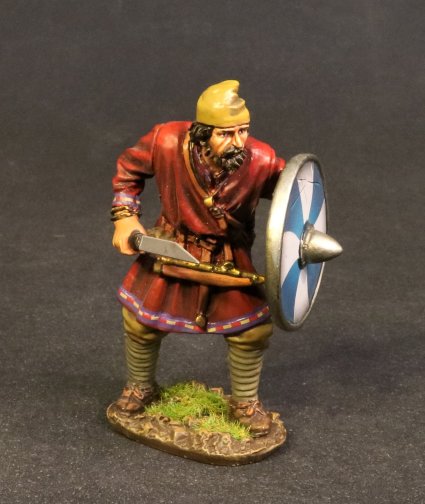
SX-29B
THE AGE OF ARTHUR,
ANGLO SAXON/ DANES.
SAXON FYRDMAN.
(1 pc)
THE AGE OF ARTHUR
ANGLO SAXON/DANISH SHIELDWALL

The death of King Edward the Confessor of England in January 1066 had triggered a succession struggle in which a variety of contenders from across north-western Europe fought for the English throne. These claimants included the King of Norway, Harald Hardrada.
The Battle of Stamford Bridge took place at the village of Stamford Bridge, East Riding of Yorkshire, in England on 25 September 1066, between an English army under King Harold Godwinson and an invading Norwegian force led by King Harald Hardrada and the English king's brother Tostig Godwinson. After a bloody battle, both Hardrada and Tostig along with most of the Norwegians were killed. The battle has traditionally been presented as symbolising the end of the Viking Age,
Harold's victory over the invading Viking army was short-lived. Three days after the battle at Stamford Bridge, on 28 September, a second invasion army led by William, Duke of Normandy, landed in Pevensey Bay, Sussex, on the south coast of England. Harold had to immediately turn his troops around and force-march them southwards to intercept the Norman army. Less than three weeks after Stamford Bridge, on 14 October 1066, the English army was decisively defeated and King Harold II fell in action at the Battle of Hastings, beginning the Norman conquest of England

SX-04
THE AGE OF ARTHUR,
ANGLO SAXON/ DANES.
SAXON HOUSECARL WITH KING HAROLD’S BANNER.
(2 pcs)

King Harold Godwinson’s personal standard remains a mystery. There is no actual evidence from the usually helpful Bayeux Tapestry, which shows the red dragon standard of the house of Wessex, but not “The Fighting man” banner around which Harold and his bodyguards made their last stand against the Normans.
It is said the banner was made by Harold’s mother, Gytha, and others that it was woven by Harold’s common law wife, Edith swan-neck.
It is believed that William the Conqueror sent it as a tribute to pope Alexander II, where it seems to have vanished.
This banner is based on the one designed for the 2010 re-enactment.

SX-29A
THE AGE OF ARTHUR,
ANGLO SAXON/ DANES.
SAXON FYRDMAN.
(1 pc)


SX-29B
THE AGE OF ARTHUR,
ANGLO SAXON/ DANES.
SAXON FYRDMAN.
(1 pc)


